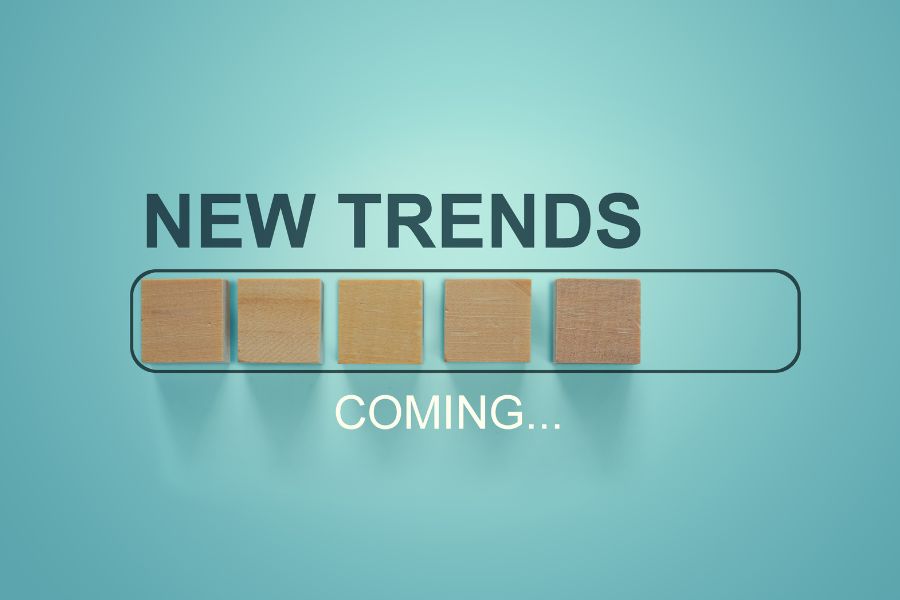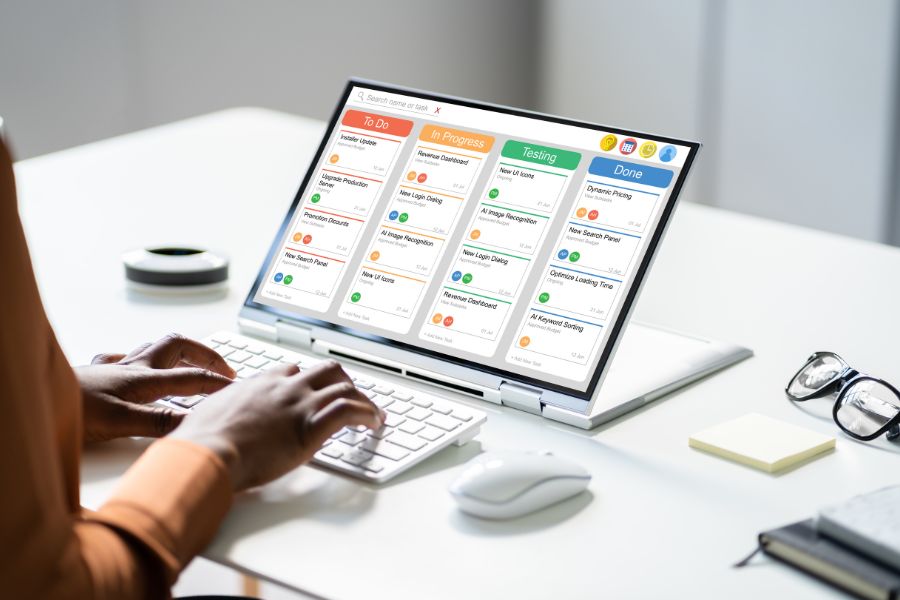Brands that deliver exceptional customer experience generate 5.7 times more revenue than their competitors. This statistic underscores the paramount importance of customer experience for businesses and elucidates why companies invest significantly in achieving superior customer satisfaction. To accomplish this, businesses rely on Customer Experience Analytics Tools. These tools diligently track and analyze customer interactions across various touchpoints, providing invaluable insights that propel satisfaction, loyalty, and overall business performance improvements. This article thoroughly explores the myriad types of customer experience analytics tools that companies can leverage to outperform the competition and cultivate profound connections with customers.
What are Customer Experience Analytics Tools?
Customer Experience Analytics Tools are sophisticated software solutions designed to collect, analyze, and report data related to customer interactions and experiences across various touchpoints. These tools provide businesses with valuable insights into customer behavior, preferences, and feedback, enabling them to enhance customer satisfaction, loyalty, and overall business performance.
In 2024, the importance of Customer Experience (CX) Analytics Tools has skyrocketed, driven by the increasing emphasis on customer-centric strategies. According to a recent report by Forrester, companies prioritizing customer experience are 60% more profitable than those that do not. Furthermore, Gartner predicts that by the end of 2024, over 75% of organizations will rely on CX analytics to differentiate themselves from competitors.
Using advanced algorithms and machine learning, CX analytics tools analyze vast amounts of data to identify patterns and trends. Modern tools offer predictive analytics, helping businesses anticipate customer needs and behaviors based on historical data.
Web Analytics Tools
Web Analytics Tools are essential software solutions designed to track and analyze the behavior of website visitors. These tools gather and interpret data regarding how users interact with web pages, providing insights that help businesses understand user engagement and optimize their online presence.
Key Features:
- Page Views: Track the number of times each page on a website is viewed.
- Session Duration: Measure the amount of time a visitor spends on the website during a single session.
- Bounce Rates: Calculate the percentage of visitors who leave the site after viewing only one page, indicating potential content or user engagement issues.
- Heatmaps: Visual representations showing where users click, scroll, and hover on a webpage, highlighting the most engaging areas.
- User Journey Mapping: Track and visualize the paths that users take through a website, from entry to exit, to understand navigation patterns and identify potential barriers.
Popular Tools:
- Google Analytics: A widely used tool that offers comprehensive tracking and reporting capabilities, including real-time data, audience insights, and conversion tracking.
- Adobe Analytics: A robust solution providing advanced segmentation, pathing analysis, and predictive analytics, ideal for large enterprises.
- Crazy Egg: Specializes in heatmaps, scroll maps, and A/B testing, helping businesses visualize user behavior and test changes for improved performance.
Use Cases:
- Improving Website Navigation: By analyzing user journeys and identifying common paths and drop-off points, businesses can enhance site structure and navigation to ensure a smoother user experience.
- Identifying High-Performing Content: Web analytics can highlight which pages and content types are most engaging and effective, allowing businesses to replicate successful strategies and focus on producing more high-value content.
- Reducing Bounce Rates: Understanding why users leave after a single page view can help identify issues such as slow loading times, irrelevant content, or poor design, enabling targeted improvements to retain visitors longer.
Social Media Analytics Tools
Social Media Analytics Tools are designed to monitor and analyze interactions and engagement on social media platforms. These tools provide valuable insights into how users interact with a brand’s social media content, helping businesses understand the effectiveness of their social media strategies and the sentiment of their audience.
Key Features:
- Sentiment Analysis: Determines the sentiment (positive, negative, neutral) behind social media posts and comments to gauge public opinion.
- Engagement Metrics: Tracks likes, shares, comments, and other forms of engagement to measure the popularity and impact of social media content.
- Social Listening: Monitors brand mentions and discussions across social media platforms, allowing businesses to stay informed about what people are saying about them.
- Influencer Tracking: Identifies and analyzes the activity and impact of social media influencers who interact with or mention the brand.
Popular Tools:
- Hootsuite: Offers comprehensive social media management, including post-scheduling, engagement tracking, and analytics.
- Sprout Social: Provides robust reporting and analytics, social listening, and engagement tools for managing social media campaigns.
- Brandwatch: Specializes in advanced social listening and analytics, offering deep insights into social media trends and sentiment.
Use Cases:
- Measuring Campaign Success: Analyzing engagement metrics and sentiment to assess the effectiveness of social media campaigns and identify areas for improvement.
- Understanding Customer Sentiment: Using sentiment analysis to gauge public opinion and address any negative feedback or trends proactively.
- Identifying Brand Advocates: Tracking influencer and user engagement to identify and nurture brand advocates who can help promote the brand.
Customer Feedback and Survey Tools
Customer Feedback and Survey Tools are designed to collect and analyze direct feedback from customers. These tools help businesses gather valuable insights into customer satisfaction, preferences, and experiences.
Key Features:
- Surveys: Create and distribute surveys to gather customer opinions on various aspects of their experience.
- NPS (Net Promoter Score): Measures customer loyalty by asking how likely customers are to recommend the brand to others.
- CSAT (Customer Satisfaction Score): Assesses customer satisfaction with a particular product, service, or interaction.
- Text Analytics: Analyzes open-ended responses to identify common themes and sentiments.
Popular Tools:
- SurveyMonkey: A user-friendly tool for creating and distributing surveys, with robust analytics for interpreting results.
- Qualtrics: Offers advanced survey capabilities and integrates with other data sources for comprehensive customer insights.
- Medallia: Focuses on capturing customer feedback across multiple channels and providing actionable insights.
Use Cases:
- Gauging Customer Satisfaction: Using surveys and CSAT scores to measure customers’ satisfaction with their experiences.
- Identifying Areas for Improvement: Analyzing feedback to pinpoint specific areas where the business can enhance its offerings.
- Tracking Customer Loyalty: Using NPS to monitor changes in customer loyalty over time and identify trends.
Customer Journey Analytics Tools
Customer Journey Analytics Tools visualize and analyze the entire customer journey across various touchpoints. These tools help businesses understand how customers interact with their brand from initial awareness through to post-purchase.
Key Features:
- Journey Mapping: Visualizes the steps customers take during their interaction with the brand.
- Touchpoint Analysis: Examines each interaction point to understand its impact on the overall journey.
- Drop-off Points: Identifies where customers disengage from the journey, allowing businesses to address potential issues.
- Conversion Paths: Analyze the paths that lead to successful conversions to optimize and replicate them.
Popular Tools:
- Thunderhead: Provides comprehensive journey mapping and real-time interaction management.
- Adobe Experience Platform: Offers advanced analytics and journey orchestration across multiple channels.
- Pega: Specializes in end-to-end customer journey management and analytics.
Use Cases:
- Optimizing Customer Journeys: Improving the overall customer experience by identifying and addressing pain points.
- Identifying Friction Points: Using journey mapping to find and resolve issues that cause customer frustration.
- Improving Conversion Rates: Analyzing successful conversion paths to enhance and replicate effective strategies.
Predictive Analytics Tools
Predictive Analytics Tools use historical data and machine learning algorithms to predict future customer behaviors and trends. These tools help businesses anticipate customer needs and make data-driven decisions.
Key Features:
- Machine Learning Algorithms: Utilizes algorithms to analyze data and predict future outcomes.
- Predictive Modeling: Creates models to forecast customer behaviors based on historical data.
- Trend Analysis: Identifies patterns and trends over time to inform future strategies.
- Scoring Systems: Assigns scores to customers based on their likelihood of certain behaviors.
Popular Tools:
- SAS Customer Intelligence: Provides advanced analytics and predictive modeling capabilities.
- IBM Watson: Uses AI and machine learning to deliver predictive insights and recommendations.
- Microsoft Azure Machine Learning: Offers scalable machine learning solutions for predictive analytics.
Use Cases:
- Forecasting Customer Needs: Anticipating customer demands and adjusting strategies accordingly.
- Identifying At-Risk Customers: Predicting which customers are likely to churn and implementing retention strategies.
- Enhancing Personalization: Using predictive insights to deliver more personalized and relevant customer experiences.
Text and Sentiment Analysis Tools
Text and Sentiment Analysis Tools analyze text data from customer interactions to understand sentiment and themes. These tools help businesses gain insights into customer opinions and emotions.
Key Features:
- Natural Language Processing (NLP): Processes and understands human language data.
- Sentiment Scoring: Assigns sentiment scores to text data to determine positive, negative, or neutral sentiment.
- Keyword Extraction: Identifies key terms and phrases from text data.
- Topic Modeling: Groups text into themes and topics for deeper analysis.
Popular Tools:
- Clarabridge: Offers comprehensive text and sentiment analysis capabilities.
- Lexalytics: Specializes in NLP and sentiment analysis for various data sources.
- MonkeyLearn: Provides easy-to-use text analysis tools with machine learning capabilities.
Use Cases:
- Analyzing Customer Reviews: Understanding the sentiment and themes in customer reviews to identify strengths and weaknesses.
- Monitoring Social Media Sentiment: Tracking sentiment on social media to gauge public opinion and respond proactively.
- Understanding Customer Feedback: Analyzing text feedback from surveys and other sources to gain deeper insights.
Voice of the Customer (VoC) Tools
Voice of the Customer (VoC) Tools capture and analyze customer opinions, preferences, and feedback from various channels. These tools help businesses understand the complete customer perspective.
Key Features:
- Multichannel Feedback Collection: Gathers feedback from multiple sources such as surveys, social media, and customer service interactions.
- VoC Dashboards: Provides visual representations of VoC data for easy interpretation.
- Actionable Insights: Offers recommendations based on feedback to improve customer experiences.
- Trend Tracking: Monitors changes in customer sentiment and preferences over time.
Popular Tools:
- Qualtrics: A leader in VoC solutions, offering comprehensive feedback collection and analysis.
- Medallia: Provides robust VoC capabilities with advanced analytics and insights.
- NICE Satmetrix: Specializes in VoC programs focusing on customer loyalty and satisfaction.
Use Cases:
- Comprehensive VoC Programs: Implementing broad VoC initiatives to gather holistic customer insights.
- Improving Product Development: Using feedback to inform product enhancements and innovations.
- Enhancing Customer Service: Leveraging insights to improve customer service interactions and overall satisfaction.
Integrating Customer Experience Analytics Tools with POS Systems
Why Integrate Customer Experience Analytics Tools with POS Systems?
Unified Customer Insights
By integrating customer experience analytics tools with POS systems, businesses can gain a holistic view of the customer journey, both online and offline.
This integration allows for the collection of data across multiple touchpoints, providing a complete picture of customer interactions and preferences. With a unified insight into customer behavior, companies can better understand their customers’ needs and tailor their strategies accordingly.
Enhanced Personalization
Access to comprehensive customer data enables businesses to deliver more personalized experiences.
By understanding in-store purchase behaviors in conjunction with online interactions, companies can develop tailored marketing strategies and personalized recommendations. This level of personalization not only enhances customer satisfaction but also drives loyalty and repeat business.
Improved Inventory Management
Integration between customer experience analytics tools and POS systems helps track inventory levels in real-time. This ensures that popular items are always in stock, reducing the risk of overstocking or stockouts.
As a result, businesses can achieve better inventory planning and more efficient stock management, leading to optimized operations and increased profitability.
Seamless Customer Experience
A seamless integration ensures that customer data flows smoothly between the POS system and customer experience analytics tools. This results in a more cohesive customer experience where customers feel recognized and valued across all channels.
By maintaining a consistent and personalized experience, businesses can enhance customer satisfaction and build stronger relationships with their clientele.
The Role of ConnectPOS
To fully capitalize on the benefits of integrating customer experience analytics tools with POS systems, choosing the right POS system is crucial. This is where ConnectPOS plays a pivotal role.
Real-Time Data Synchronization
ConnectPOS ensures that all data, whether from online or offline transactions, is synchronized in real-time. This allows businesses to have up-to-date information on customer behavior and inventory levels, facilitating timely decision-making. With real-time data, companies can respond swiftly to market changes and customer demands.
Advanced Reporting and Analytics
ConnectPOS offers powerful reporting tools that provide detailed insights into sales performance, customer preferences, and inventory trends. Integrating these reports with customer experience analytics tools enhances the depth of data analysis, leading to more informed business strategies. This comprehensive reporting capability helps businesses identify opportunities for growth and areas for improvement.
User-Friendly Interface
ConnectPOS features an intuitive and user-friendly interface, making it easy for staff to use and for management to access key insights. The simplicity of use ensures that the integration process is smooth and efficient, minimizing disruptions to business operations. An easy-to-navigate system boosts productivity and allows employees to focus on delivering excellent customer service.
Scalability and Flexibility
Whether you’re a small retailer or a large enterprise, ConnectPOS is scalable to meet the needs of businesses of all sizes. Its flexibility allows it to integrate with a variety of customer experience analytics tools, making it a versatile choice for retailers looking to enhance their analytics capabilities. This adaptability ensures that as your business grows, ConnectPOS can grow with you, accommodating increased complexity and data volume.
For Small Businesses
Small businesses can leverage ConnectPOS to gain a competitive edge by understanding customer preferences and tailoring their offerings accordingly. The cost-effective nature of ConnectPOS makes it an ideal solution for smaller retailers looking to enhance their customer experience without a significant investment. By using ConnectPOS, small businesses can implement big-business strategies on a smaller budget.
For Large Enterprises
Enterprises can benefit from ConnectPOS’s scalability and advanced analytics features to manage complex operations and large volumes of data. The seamless integration with customer experience analytics tools allows for unified data management across multiple locations and channels. This capability is essential for maintaining consistency and efficiency in large-scale operations, ensuring that every customer interaction is optimized for success.
FAQ about customer experience analytics tools
- How do social media analytics tools benefit businesses?
Social media analytics tools like Hootsuite, Sprout Social, and Brandwatch monitor and analyze social media interactions. They offer features like sentiment analysis, engagement metrics, social listening, and influencer tracking. These tools help measure campaign success, understand customer sentiment, and identify brand advocates.
- What are customer feedback and survey tools used for?
Customer feedback and survey tools, such as SurveyMonkey, Qualtrics, and Medallia, collect and analyze direct feedback from customers. These tools feature surveys, NPS (Net Promoter Score), CSAT (Customer Satisfaction Score), and text analytics. They gauge customer satisfaction, identify improvement areas, and track customer loyalty.
- What is the purpose of customer journey analytics tools?
Customer journey analytics tools, including Thunderhead, Adobe Experience Platform, and Pega, visualize and analyze the entire customer journey across touchpoints. They offer journey mapping, touchpoint analysis, drop-off points, and conversion paths, helping businesses optimize customer journeys, identify friction points, and improve conversion rates.
Conclusion
Customer experience analytics tools are indispensable for any business aiming to thrive in the modern marketplace. This enables them to make data-driven decisions that enhance customer satisfaction and loyalty.
As technology continues to evolve, the integration of these tools with systems like ConnectPOS will further streamline operations and provide even richer insights, ensuring businesses can meet and exceed customer expectations. Contact us today to see the power of ConnectPOS!
ConnectPOS is a all-in-one point of sale solution tailored to meet your eCommerce POS needs, streamline business operations, boost sales, and enhance customer experience in diverse industries. We offer custom POS with features, pricing, and plans to suit your unique business requirements.




